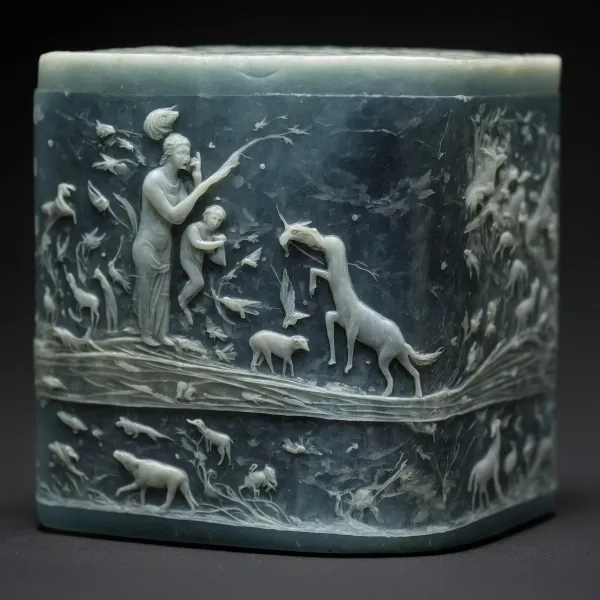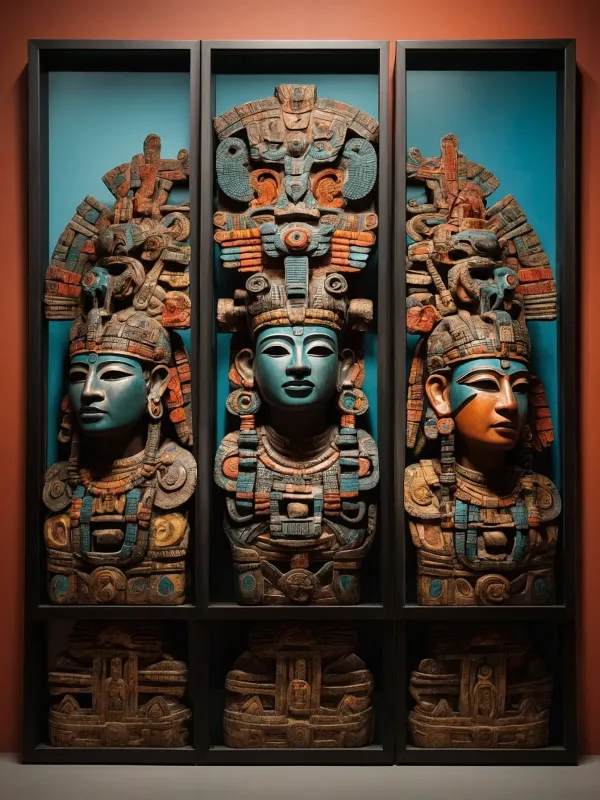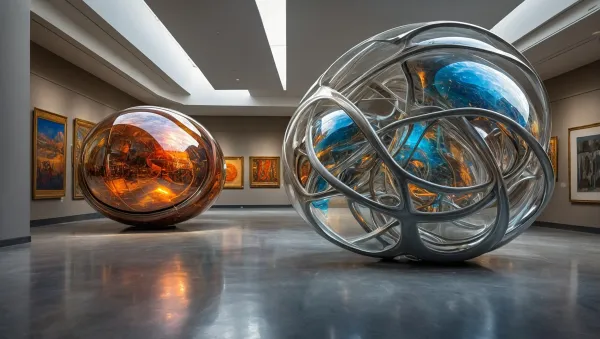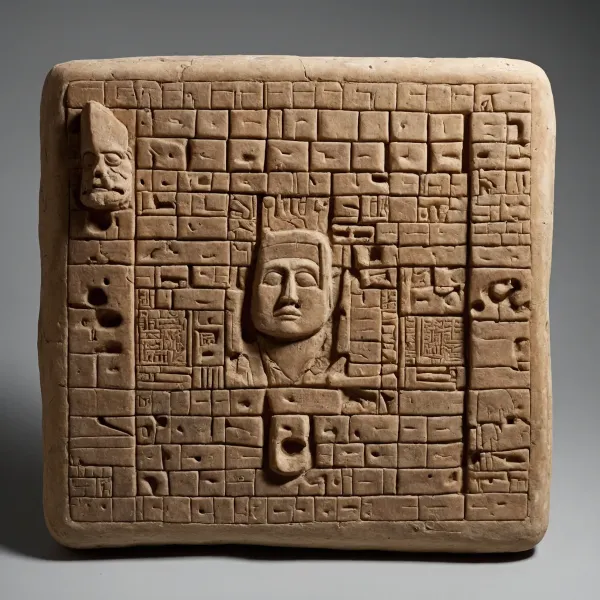Pernicious Pigment
In her quest to find the perfect color, an artist took from a mystical place. But the place might have claimed something from her in return.
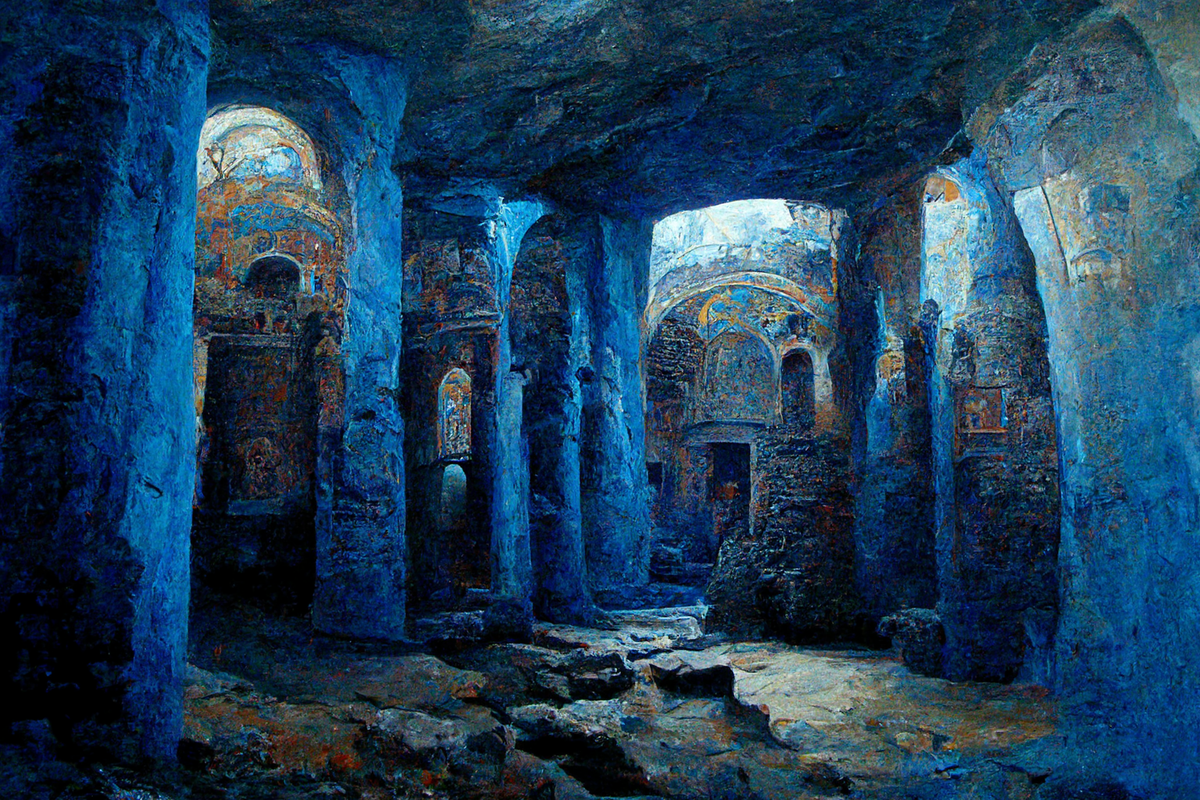
Painter Jacinda Johnson-Brown started her career in the mid-1970s as part of the Photorealist movement, but her work faded into the background. Her biggest critic at the time was her lackluster use of color, which she tried to enhance for a decade without being able to catch the audience's eye.
That would change in 1982, when she unveiled "The Blue Temple" in the collective exhibit "Reality and Dreamscapes", curated by famous New York gallerist David Abdalian. Her use of color delighted critics and art lovers alike, in particular the vividness of her blue pigment, which according to experts could only compare to The Azurite Temple itself—the Byzantine ruins which served as Johnson-Brown's inspiration.
"The Blue Temple" catapulted Jacinda Johnson-Brown to success and began a trend of artwork focused around the color blue. No other artist ever came close to mimicking Johnson-Brown's pigment, though. She kept her method for obtaining such unique hues in complete secrecy for years, even from her closest friends.
The artist finally revealed the origin of the pigment in an interview for the PBS show Heart to Art:
As a human, I've never been free from my wish to possess. But I'd never felt the urge to possess a color until I saw the blue on those temple walls.
I'm not proud of what I did. I should've known better than to deface a place of such beauty and historical value. But I couldn't leave without taking a sample of that exact blue. So I did.
When the tour guide wasn't looking, I broke a small piece from one of the columns and put it in my pocket. Back in my workshop, I ground the blue stone and mixed it with my paint. Just one brushstroke and I was mesmerized.
Then and there, I knew that color would haunt me forever.
-Jacinda Johnson-Brown, extract from "Heart to Art", episode 237 (2019)
Soon after the closing night of the "Reality and Dreamscapes" exhibit, Jacinda Johnson-Brown developed the affliction that would mark the rest of her life and her career—she woke up one morning to discover she could only see the color blue, but none of the rest.
Her case became one of the most puzzling for the medical community. When no doctor found a physiological reason behind her ailment, psychologists attributed Johnson-Browns inability to see any color but blue as a mental blockage due to the impact of her long-awaited success. Physical or mental, no one has ever been able to cure her, and she sees only blue to this day. Any other color looks, as she puts it, "gray as a dusty concrete floor."
Jacinda Johnson-Brown is still active today. Her peculiar condition has become her artwork's signature, but also brought her a fair amount of suffering.

I'm celebrated. I have what other people call "an inimitable style." I wish I didn't. I've been bored to death for the better part of 40 years. Blue, blue, blue. Only blue. Sometimes I'm so frustrated I feel like burning my brushes, and hope the flames would turn red.
I know they won't.
-Jacinda Johnson-Brown, from her autobiography "The Stolen Color" (2022)

